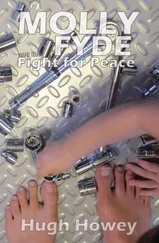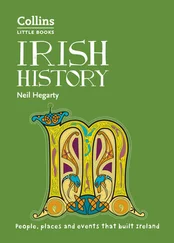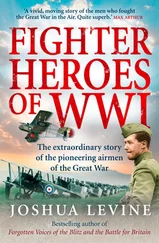The ‘Cost of the Troubles Study’ opens up a vista on a world beyond belief and self-importance. It is a world with few spokesmen, but plenty of inhabitants. These are the people whose voices were rarely heard in the reports that filled the English newspapers. One man told me of sitting in a bar on the Falls Road, listening to some old-time republicans boasting of the length of time they’d spent in prison. After a while another man tired of what he was hearing. ‘Fucking lucky for you!’ he shouted. ‘You done twenty years sitting in a safe wee cell? And your family provided for? What about the poor man who had to go out to work every morning, risking fucking death? You were in a fucking sanctuary!’
At the junction between the two worlds, an act of common kindness could attract recrimination. A Catholic man from Claudy told me how he had once tended a policeman who had been shot in the street. He put a tourniquet around the policeman’s leg and sat with him until an ambulance arrived. A while later, at his holiday home across the border in Donegal, an IRA man on the run approached him and asked why he had helped the policeman. He replied that he would have helped a dog if he had needed it. ‘In fact,’ he added, ‘I might even have helped you.’ Days later he was threatened: ‘We’re very worried for you and your family so long as you stay here…’ I asked him how republicans in one town had known of an incident that occurred in another. ‘Kick one of them,’ he said, ‘and they all limp.’
One man who spoke for the citizens of the stifled world was Seamus Heaney. Heaney, a Catholic from Derry, was once asked by Sinn Féin director of publicity Danny Morrison, ‘Why don’t you write something for us?’ ‘No,’ replied Heaney, ‘I write for myself.’ His poem ‘Whatever You Say Say Nothing’ gives voice to a passive people, too cowed to speak out against ‘bigotry and sham’. According to Heaney, ‘smoke signals are loud-mouthed compared with us’. The poem ends:
Is there a life before death? That’s chalked up In Ballymurphy. Competence with pain, Coherent miseries, a bit and sup, We hug our little destiny again.
A ‘little destiny’ is not much of a thing to hug. It is hardly surprising that so many of the people of Northern Ireland, once denied a life before death, now fear a return to the Troubles; nor is it surprising that tens of thousands of these people gathered in Belfast, Derry, Newry, Lisburn, and Downpatrick to rally for peace in March 2009 in the wake of the dissident killings.
And yet ‘The Grauballe Man’, another of Heaney’s poems from the same collection, includes the words ‘hung in the scales with beauty and atrocity’. Echoing W. B. Yeats, who spoke of ‘a terrible beauty’ born of the 1916 Easter Rising, Heaney is daring to hint at a beauty to the modern Troubles. While giving a voice to those silenced by the violence in one poem, he is suggesting a nobility to that violence in another.
Northern Ireland is built on such contradictions. It was created as a political compromise to bring an end to conflict, but conflict has flourished within it. It goes by the name of ‘Northern Ireland’, but its northernmost point lies to the south of part of the Irish Republic. Its people are divided by religion, but their quarrel is not religious. And while they are divided, they are also united. As a man once said, ‘If you understand Northern Ireland, you don’t understand Northern Ireland.’
As I eased my way into this world of divided, united people, I made my first base just outside the pretty town of Killyleagh, on the banks of Strangford Lough in County Down. I was staying with the Lindsays, a warm and generous family who had never met me before yet welcomed me like an old friend. Katie, their daughter, is a talented artist who works with patients at the Mater Hospital in Belfast. Their lives were a world away from my own in London, but I quickly became very adept at lighting a wood fire, and sitting by it with a glass of whisky. Through the Lindsays I had the fortune to meet Bobbie Hanvey, a photographer, writer, broadcaster, and one-time nurse in Downshire mental hospital, a man described by J. P. Donleavy as ‘Ireland’s most super sane man’.
Bobbie hosts a programme, The Ramblin’ Man , every Sunday night on Downtown Radio, in which he interviews local personalities. His easy-going charm allows him to get away with asking some very awkward questions. He prised several seconds of rare silence from Ian Paisley by asking him whether, had he been born a Catholic, he could have been a member of the IRA. It cannot be easy for Paisley to accept that God could have made him a Catholic, never mind that he could have been a member of the IRA. The eventual answer was, ‘No, I don’t think so,’ followed by an unprovoked denial that he had ever supported loyalist violence. A Hanvey trademark is the undercutting of a serious subject with a flash of mischief. He interrupted the ex-leader of the UVF, in mid flow on the subject of large booby traps, with the observation that the biggest booby trap he’d encountered was a brassiere. He also advised a Chief Constable of the Royal Ulster Constabulary (RUC), who had once worked in vice, to write a memoir with the title Pros ’n’ Cons . Nonplussed, his guest thanked him for ‘that very impressive suggestion’.
But Bobbie’s irreverence cannot mask a keen intellect and a shrewd understanding of the complexities of Northern Ireland, from which he seems to stand aloof, friendly with men and women of all sides. I would become very grateful for his insights, and even more grateful for the chance to quote from his interviews in this book. One of my abiding memories of my time in Northern Ireland is of an evening spent upstairs in his Down-patrick house, listening to recordings of interviews. As I wondered where I could get something to eat, I heard footsteps coming up the stairs and Bobbie appeared in the doorway, his Marty Feldman hair silhouetted against the light. He walked in and plonked a plate down in front of me, on which sat two foil-wrapped chocolate marshmallows. ‘I’ve got to tell you,’ he said, ‘I’m not much of a cook.’
Maybe not, but he was a very helpful ally in this strange and familiar place. He phoned me recently, asking me to find him a couple of Chasidic Jews to photograph. As though I’d have them around the house. That’s fair enough, though. He’s brought me his people. He can have a pair of mine.
Конец ознакомительного фрагмента.
Текст предоставлен ООО «ЛитРес».
Прочитайте эту книгу целиком, купив полную легальную версию на ЛитРес.
Безопасно оплатить книгу можно банковской картой Visa, MasterCard, Maestro, со счета мобильного телефона, с платежного терминала, в салоне МТС или Связной, через PayPal, WebMoney, Яндекс.Деньги, QIWI Кошелек, бонусными картами или другим удобным Вам способом.












